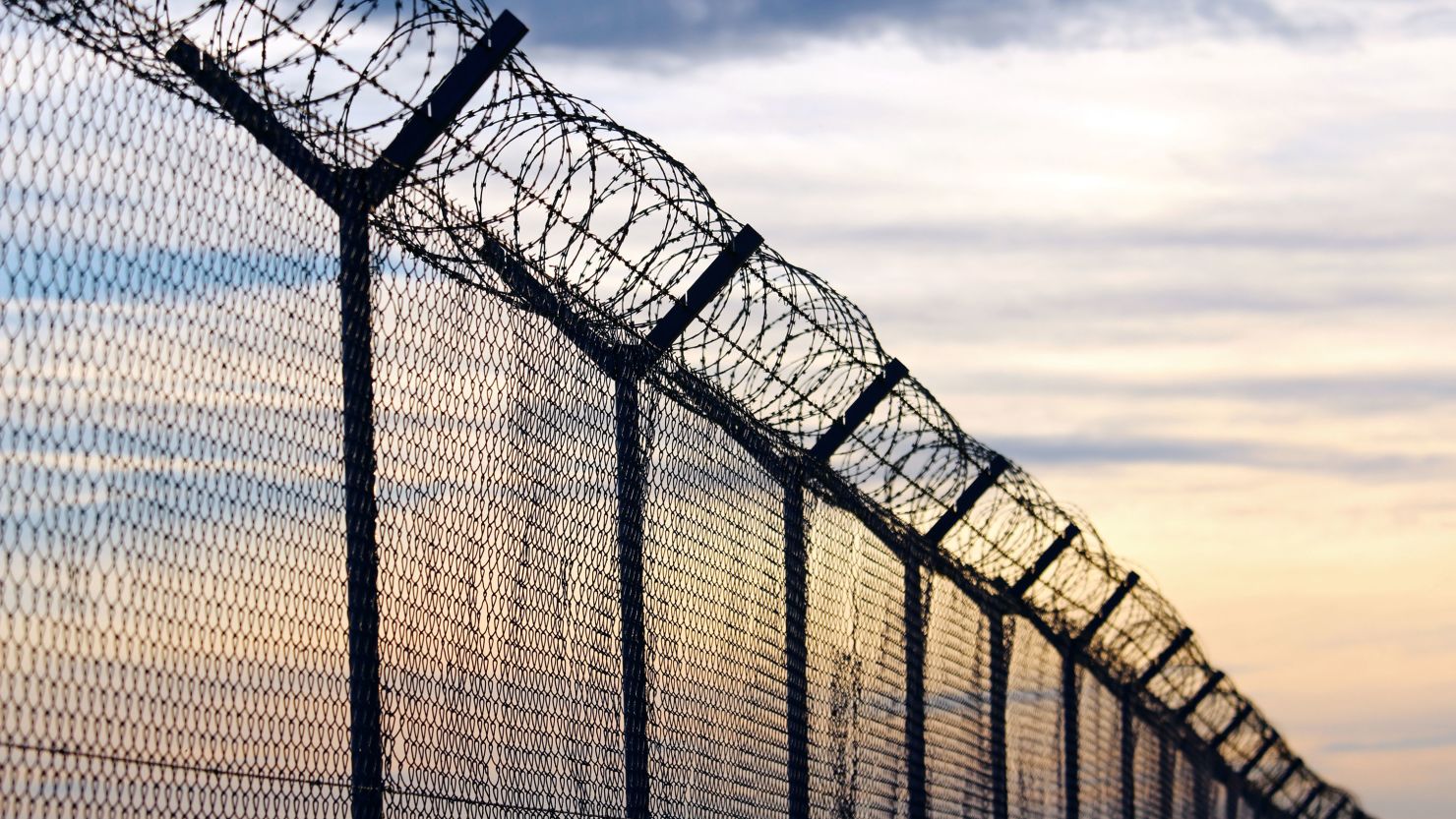Editor’s note: Reggie B. Walton is a senior judge on the US District Court for the District of Columbia. He was chair of the National Prison Rape Elimination Commission, tasked with identifying ways to curb the incidence of sexual assaults in prison. The commission was created by Congress as part of the 2003 Prison Rape Elimination Act. The views expressed in this commentary are his own. Read more opinion at CNN.
For decades, prison rape and other forms of sexual abuse were an unseemly subject of humor on television screens, in living rooms and in comedy clubs across America.
Hearings I chaired two decades ago of the National Prison Rape Elimination Commission helped show me and my colleagues on the panel the degree to which prison rape, far from being a laughing matter, is a serious and sometimes even tragic problem. People who have been the victims of sexual assault while incarcerated, however, deserve not derision, but our support.

For far too long, rape and other forms of sexual abuse were tacitly accepted consequences of incarceration. After President George W. Bush signed into law the Prison Rape Elimination Act, or PREA, in September 2003, hearings we convened marked what I believe was the beginning of a change in the way that we talk about sexual abuse in prisons, jails and juvenile and other detention facilities.
The text of the bill noted that “experts have conservatively estimated that at least 13 percent of the inmates in the United States have been sexually assaulted in prison. Many inmates have suffered repeated assaults.”
In a remarkable show of solidarity, every member of Congress — Democrat and Republican — voted for the legislation. Today, 20 years after its passage, against the backdrop of an increasingly divided Congress and society, PREA reminds us of values that can and should unite us.
Until the passage of the PREA, there were no comprehensive figures or studies on the prevalence of rape inside detention facilities. It would take years before the most meaningful data documenting the prevalence of sexual abuse in confinement facilities nationwide was available from the Bureau of Justice Statistics — research that was mandated by the legislation.
What we did have, before the passage of the measure and during the hearings that the commission held around the country after PREA’s passage, was an endless stream of personal accounts.
Men and women described in detail to me and to my fellow commission members the abuse they endured while incarcerated, sometimes over many years. Some recounted how they were disbelieved, silenced or unofficially punished for speaking out and seeking help.
The formerly incarcerated people who testified spoke of the guilt, shame and rage that consumed them after being sexually assaulted and how the abuse cast a shadow over their lives even years after they were released — trauma evident in their voices, on their faces and in the tears many shed.
During sometimes harrowing testimony, I and my fellow members of the commission learned that such trauma and its wide-ranging repercussions could be the result of just a single night in jail.
One person described the lingering effects of being gang-raped and beaten by other inmates: “I’ve been hospitalized more times than I can count and I didn’t pay for those hospitalizations, the taxpayers paid.” We also heard heartbreaking testimony from relatives of detainees who had committed suicide to escape the brutality they were experiencing.
For the especially vulnerable — including incarcerated young people; lesbian, gay, bisexual and transgender individuals; people with mental illness; and for those detained in jurisdictions where proactive measures had not been taken to address the problem — sexual assault had become, in effect, part of their punishment.
In addition to documenting the prevalence of sexual assaults in prison, the commission developed standards designed to prevent, detect and respond to sexual abuse and harassment in confinement settings nationwide. In 2012, the Department of Justice formally adopted a version of those standards that went into effect in August of the following year.
In the decade since, the DOJ has provided grants, training and technical assistance reaching hundreds of detention facilities and thousands of staff and focused on the essential elements of a sexually safe environment. These efforts have included not only identifying and protecting those most vulnerable to abuse but also creating a culture inside facilities that encourages the reporting of abuse.
This work also involved providing counseling, accompaniment through forensic examinations and investigative interviews and other support to victims. And we’ve encouraged a culture that treats incarcerated people as presumptively credible witnesses when reports of abuse are investigated.
The standards also established an external audit to ensure adherence to the many specific policies and practices that are necessary to achieve these ends. Many state and local jurisdictions have taken similar steps, but unfortunately some have failed to do so.
Still, much has improved as a result of these efforts. According to the National PREA Resource Center, the hub for training and technical assistance, attitudes among staff and incarcerated people have changed significantly.
Accepting sexual abuse as inevitable, for example, and turning a blind eye when sex assaults occur are far less common than they once were. Based on the experiences of advocates who work inside facilities, prison rape is less frequently a subject of humor inside facilities or in society at large.
And at a time when some states and other governmental entities have taken actions that disregard the unique challenges faced by members of the LGBTQ community and the scorn that many have for members of that population, corrections staff have become increasingly aware of and responsive to the particular vulnerabilities of this population.
This is because, as required by the PREA standards, people who work in the field of criminal justice are receiving training about communicating effectively with this population, screening people upon arrival for particular vulnerabilities. They’re also getting assistance in making decisions about individuals’ housing, programming and work assignments, sexual orientation, gender identity, past experiences of victimization and other experiences that can increase incarcerated people’s vulnerability.
We are awaiting updated data from prisons and jails, but surveys of youth in juvenile facilities administered just before the Covid-19 pandemic revealed some reductions in the rates of sexual abuse — particularly abuse by staff. Notwithstanding these and other signs of progress, however, there is ample evidence that sexual abuse in confinement remains a significant problem.
Last year, Congress held hearings to explore systemic abuses by staff in Federal Bureau of Prisons facilities that had passed their audits, showing compliance with the PREA standards.
The inquiry revealed significant weaknesses in the audit, including the failure of audits to identify problems of sexual abuse in facilities where the Senate uncovered substantial misconduct as well as failures by the Federal Bureau of Prisons to respond to reports of sexual abuse by staff and to conduct meaningful investigations with real consequences.
This is especially troubling since PREA has the most force in federally operated facilities. There is also evidence that many state and local facilities have not done the work to ensure their staff have the resources and support to implement the standards that the commission adopted.
The Prison Rape Elimination Act was never only about protecting people from sexual abuse in an environment where it is often impossible to protect oneself. It was also about affirming the essential dignity and fundamental human rights of incarcerated people.
The remarkably diverse coalition that pushed for the passage of PREA and those involved today in implementing the standards and advocating for change from the outside understand that PREA challenges the underlying culture of confinement and, little by little, changes it for the better. Those effects have been unacceptably slow to occur and highly uneven, evident in some facilities far more than others, but those changes are real and must continue.
Specifically, Congress must continue to fund this important work at a level that adequately supports it. DOJ must ensure that audits of the PREA standards return reliable results, which may mean rethinking the structure of the audit.
Corrections leaders also must invest in the work — not only to pass their audits successfully but also to ensure that the culture of the institutions they operate supports the practices necessary to create sexually safe environments.
Last but not least, medical and mental health professionals and rape crisis advocates must be able to provide the same services to people on the inside as provided to those who are not in detention.
Taking away someone’s liberty for the commission of crime is a necessary decision we have made as a society, but with it comes tremendous responsibility. That is a responsibility that my colleagues and I as judges encounter virtually every day. It is also the mandate I agreed to take up at the commission that I chaired 20 years ago.
I call on our leaders at every level to reaffirm their commitment to that responsibility now and in the years to come. We must redouble our efforts, if we aim to see incarcerated people return to society unbroken by the scourge of sexual assault.



